Carbon floor heating: a general overview of the system + installation and connection technology
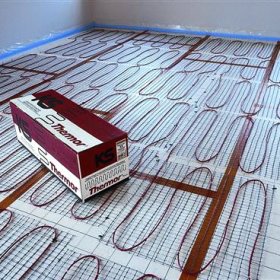
Carbon flooring - a unique infrared floor heating system. Carbon rods are used as heating elements. The material is a high-strength carbon fiber resistant to diverse influences. The rods are reliably connected to each other with a copper cable of increased protection, in continuous systems the heating elements are sealed in a film. The efficiency of carbon-fiber underfloor heating is much higher than that of conductive-convection heating systems. The self-regulating carbon fiber infrared heating floor is environmentally friendly, consumes a record low amount of electricity, and is completely safe.
Content
The principle of operation of such a system
Thermal rays warm objects in the room, freely passing through the floor covering and hardly heating the air, which fundamentally distinguishes them from the usual electric underfloor heating. The bodies of people, furniture, objects are heated evenly. The heating efficiency does not depend on the presence or absence of drafts, the level of humidity in the room. 90% of the radiation is in the far infrared, which positively affects the health of people living in homes with this type of heating.
About half of the heat loss of the human body occurs precisely in the infrared bioresonance range (wavelength 9-10 microns). In the same range, heat is most effectively absorbed. Therefore, under the condition of infrared heating for a comfortable state, a person needs a temperature 4-5 C lower than with other types of heating. Thanks to this and high efficiency, heating costs are reduced by 15-20%. The air in rooms with carbon floors does not overheat, it remains fresh and not overdried.
Carbon floors not only allow you to maintain a comfortable indoor temperature, but also have a healthy effect on the human body. Radiant heating and an increased amount of negatively charged ions act like solar heat. The effect of radiation is similar to the operation of aeroein generators used in medicine.
Biogenetic far infrared rays played a huge role in the development of life on the planet, they are called rays of life. Their use in heating systems has additional advantages:
- stress reduction;
- suppression of cancer cell growth;
- accelerated slag removal;
- purification and deodorization of polluted air;
- plant growth stimulation;
- destruction of hepatitis virus;
- positive effect on patients with psoriasis, diabetes.
Living infrared radiation is perceived by the body as its own heat and has a mild healing effect - blood microcirculation improves, oxidation-reduction processes are stimulated, due to which a person is less prone to fatigue and feels better.
Types of carbon heating systems
All carbon-based heating systems are lightweight, durable, easy to install, and corrosion resistant. Distinguish between rod and solid (film) carbon floors. Flexible heating elements of the rod systems are connected into mats by a heat-resistant stranded copper wire 2.5 mm thick in a thick 3 mm shell.
Carbon mats are self-regulating systems, so they can be laid under furniture without the risk of overheating. They are great for mounting in a screed or in a 2-3-cm layer of tile adhesive. The protective sheath of the rod is polyester and polyethylene.
A continuous infrared film heats the room due to a single carbon layer. This floor can be cut, laid under furniture. The bands are reliably connected by soldering. Film systems can vary significantly. The usual film is two or three layer. The carbon-graphite mixture is applied using a printer on a polypropylene base.
The continuous system consists of 3 working layers, protected on both sides by 5 security layers. Such 13-layer floors reliably protect against any possible harmful effects and overheating. This type of film uses pure carbon, not a carbon-graphite mixture.
Why is this warm floor better than others?
Carbon floors can be used to heat rooms and outdoor areas. Their advantages:
Self-regulation
These are “smart” systems that control the temperature and, accordingly, the energy consumption without installing sophisticated expensive equipment. The higher the temperature, the more the distance between the particles of the heating elements increases, and the heating automatically decreases due to an increase in resistance. Thus, energy consumption is reduced. When the temperature drops, the opposite process occurs.
On parts of the floor with increased load, for example, in places where furniture is installed, the system will heat up significantly less. Rearrangement of furniture and heavy objects is not a problem; no additional measures to protect heating are required.
Reliability and safety
Since the infrared carbon floor cannot overheat due to the peculiarities of thermoregulation, there is no risk of damage or deformation of the floor covering. The heating system is extremely reliable, does not fail.
Infrared radiation from the warm floor has no negative side effects; it is used in chambers for premature babies for gentle heating of infants and a healing effect. The scope of infrared systems is constantly expanding. They are used in spas, infrared saunas.
Cost-effectiveness
The carbon floor power is 116 watts per meter. When the layer of tile adhesive or screed in which the systems are installed is heated, the power consumption is reduced. Usually it is 87 watts per meter.
To ensure maximum control of energy consumption, set thermostats. This saves up to 30% on energy costs. Today, carbon floors are the most economical of all heating systems.
Installation of carbon rod heating
The core carbon mat is very easy to install.To install it, it is enough to have simple tools and materials, no special knowledge is required. Stack the system in glue or screed. It is cut multiple of 10 cm in length. Permissible strip length is up to 20-25 m.
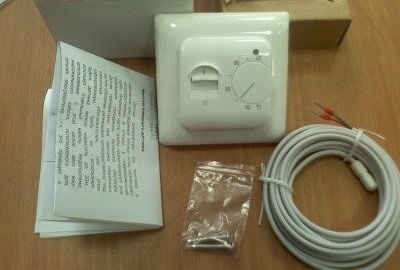
To reduce energy costs, infrared heating systems use temperature controllers with temperature sensors
Necessary accessories for installation:
- Substrate heat insulator. It allows you to increase the efficiency of the core mat and reduce heat loss. You can use foamed sheet with lavsan film. Armofol, isocom, plex, penofol or their analogues are suitable. As a heat-insulating substrate, materials with a conductive foil cannot be used.
- Connection kit. You will need at least one set of 4 thick-walled heat-shrink tubing and a pair of sleeves.
- End set of 2 thick-walled heat-shrink tubes for each strip of carbon mat.
- Thermostat equipped with a floor temperature sensor. Also, the sensor can be purchased separately. Suitable SF-7x30. The temperature regulator is chosen so that the maximum power of the planned load is lower than the maximum power of the temperature regulator by 15%.
- Corrugated tube for laying the floor temperature sensor with probe and plug.
- Connecting wire in double insulation.
You will also need these tools:
- wire strippers;
- nippers;
- crimping pliers;
- scissors;
- knife;
- screwdriver;
- technical hair dryer;
- adhesive tape construction.
The surface of the floor must be clean and even. The total area on which the carbon mat will be laid is determined, the location of the thermostat at an accessible point is prepared. The groove must be drilled in the floor for subsequent installation of the sensor in the corrugated tube.
The material is laid on the floor surface, attached to the base with glue, stapler or adhesive tape. Strips of heat-reflecting material are interconnected. The roll is rolled out from the side of the future connection to the thermostat. To turn the strip, it is cut on one side at the place of the turn, the strip is turned 180 degrees. The strips are fixed with adhesive tape on heat-reflecting material and are interconnected. Carbon rods should not intersect with each other.
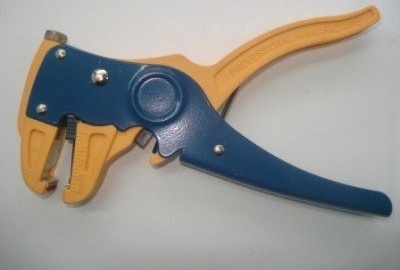
You can clean the wire from insulation either using a special tool or using forceps. You can purchase them at any building tools store.
Stripes of mat are connected to each other by mounting wires. In the place where the carbon mat is cut, you need to strip the wire from insulation. A sleeve is put on the wire in a heat-shrinkable tube, clamped by crimping pliers. Remove the insulation from the connecting wire, put on a heat-shrinkable tube.
The power wire of the carbon mat is connected to the wire connecting with a sleeve, crimped with pliers. With the help of a technical hair dryer, the sleeve is seated. The heat shrinkable tube is shifted to the joint and also seated with a hairdryer. Thus, all the bands are connected. The end kit insulates the ends of the wires. They put on heat-shrinkable tubes, seated with a hairdryer, crimped with ticks.
The first strip of mat is connected to the terminals of the thermostat using a connecting kit and wire. Connecting this, as a rule, is carried out in accordance with the instructions that come with the kit.
Holes must be made in the heat-reflecting material for a firm grip on the floor. The temperature sensor is introduced into the corrugated tube using a probe. A plug is installed on the handset. Next, the tube is placed in a prepared groove along the floor rods. The temperature controller is installed on the wall and the heating system is tested for 15 minutes, and the connections are checked for reliability.
After the installation of the carbon mat, it can be laid both in the screed and in tile adhesive.The screed is poured directly over the rods of the warm floor. Tiles are also laid directly on the warm floor with glue. The minimum thickness of the screed or adhesive layer together with the tile is 2 cm. Only special mixtures for underfloor heating can be used. The period of complete drying of the tile adhesive or screed is a minimum of 28 days. You can turn on the system only after this time.
If you still have questions - see the instructions on the video:
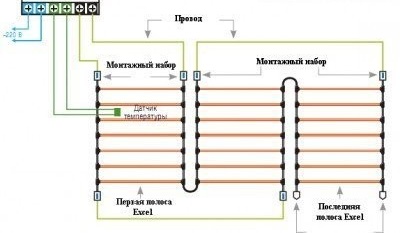

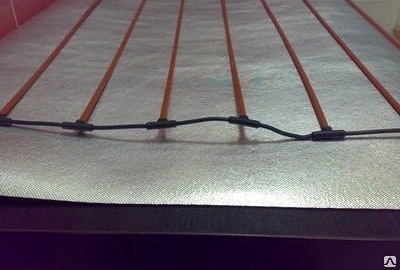
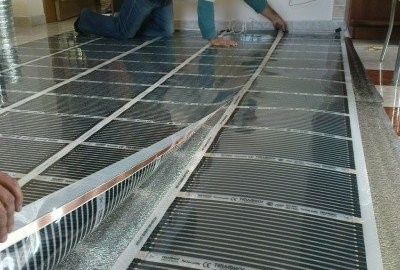
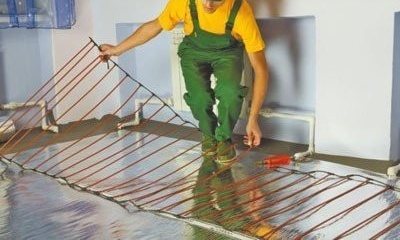
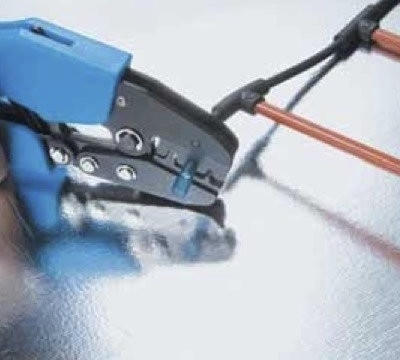
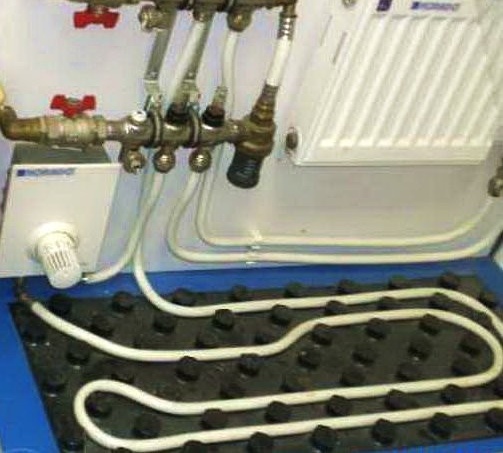
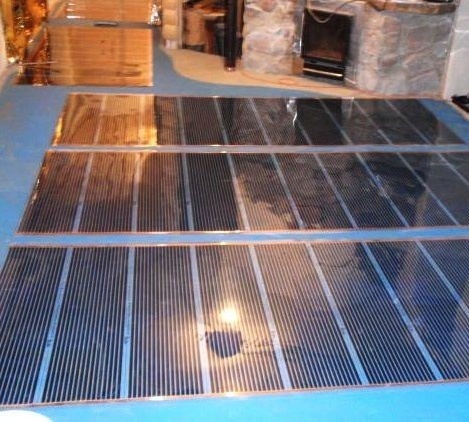
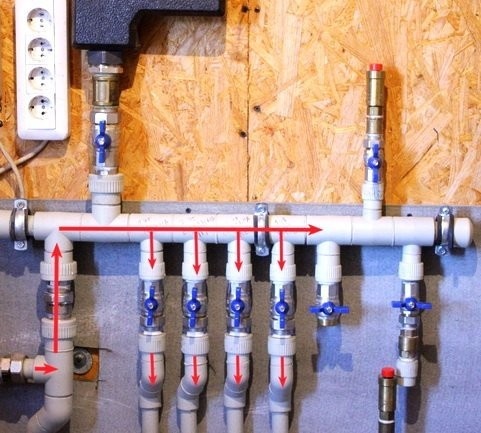
2 comments